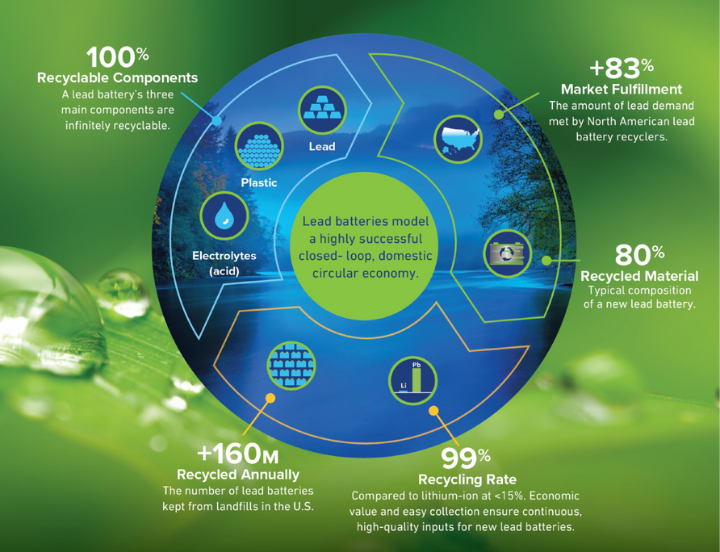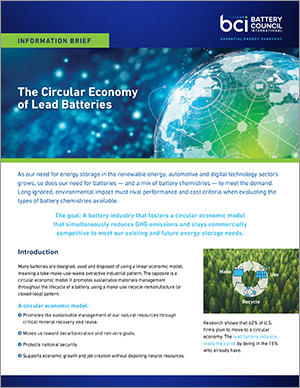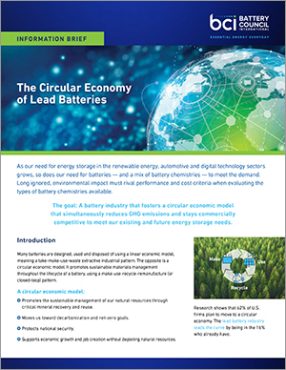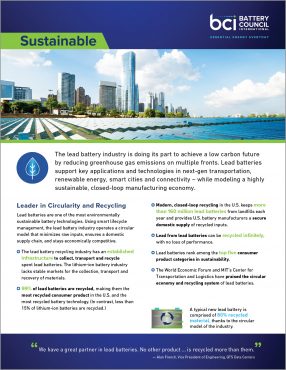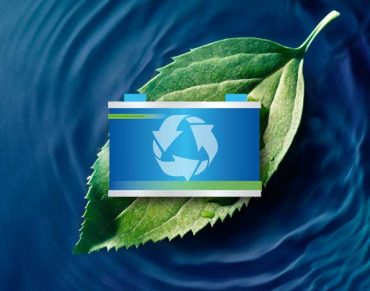The lead battery industry is doing its part to achieve a low carbon future by reducing greenhouse gas emissions on multiple fronts. Lead batteries are a climate technology and support key applications in next-gen transportation, renewable energy, grid resiliency and connectivity – while modeling a highly sustainable, closed-loop manufacturing economy.
A Model of Sustainability and Circularity
Today’s innovative lead batteries are key to a cleaner, greener future. They’re also the most environmentally sustainable battery...


